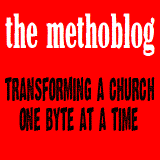Big Picture II
There is another way that this Southern Christianity will challenge us American Christians. As Jenkins puts it, “the most immediately apparent difference between the older and newer churches is that Southern Christians are far more conservative in terms of both beliefs and moral teaching.” The newer churches also have a strong orientation to supernatural phenomena, thus Pentecostalism has been a major shaping influence. They “preach deep personal faith and communal orthodoxy, mysticism, and Puritanism.”
Not only that, but Jenkins spends some time noting how the very nature of Christianity may very well change as a result of its inculturation into a society with certain cultural characteristics, especially those that already have a rich heritage of some kind of religious observance. Pagan rituals become “baptized” and used in Christian worship; holidays and seasons are converted into Christian holidays and seasons. As one example, he notes that the figure of the Virgin Mary has assumed a heightened importance in Latin American Catholicism, to the extent that, in some circles, the topic has been broached of doctrinally creating a category for Mary’s divinity, thereby adding another person to the Trinity! I don’t know what that would be called – a Quartet?
I’m a good enough Protestant to cringe when I hear that, but I wonder what would be the appropriate response to such a development! What happens when the new Christians start messing with theologies and doctrines that we find fundamental and precious?
Some Christians will likely say, “Well, what right do we have to judge them? If it’s their theology, then let them have it!”
There is a certain correctness about that stance. After all, Northern Christians will have to learn to back off and listen – really listen! – to the move of God in the southern hemispheres. We have to leave open the possibility that a new kind of Word is being spoken in another part of the world. That is strictly God’s business.
Other Christians might say, “But that’s heresy! That can’t be allowed to happen!” And they, too, are correct in saying this. The history of Christian theology precludes certain kinds of doctrine, and there is no doubt that Mary’s divinity has never been an orthodox conclusion. It is not to be believed, and there are good reasons, both scriptural and traditionally, to reject it.
I think two responses are in order. First, it will be ever more important to define the core essentials of Christianity, hand-in-hand with these new Christians, and to stick to them. There will only be a few core beliefs. Maybe only one – that Jesus is the Son of God, the Messiah. But these essentials should be consistent with the Bible, especially the gospels, and the early church councils. When these core beliefs are expounded and discovered, then we should stick to them, and clearly ascribe to them as brothers and sisters in Christ around the world.
Secondly, we will have to chill out about everything else. Anything that is not a core essential is up for grabs. If we disagree on those things, which include lots of moral/ethical issues, then we will have to be cordial about it. That may be the hardest thing for us Western Christians. We have very clear ideas about the way we think the world ought to be. We write “systematic” theologies, compose great works on ethics and morality, and can debate the ins and outs of the doctrines of justification, atonement, and sanctification. We have even stronger ideas of what a correct worship service looks and sounds like.
If we cling too tightly to our Western conceptions of proper church etiquette, then we may entirely miss the move of God, as it sweeps across the world. It may look brown or dark red; it may sound like the roaring of a thousand different languages; it may make us nervous and unsettled; it may seem uneducated and raw; it may scare us; it may anger us; it may send us screaming back to our comfortable pews in suburban America.
But if God’s in it, I’d hate to miss it.


